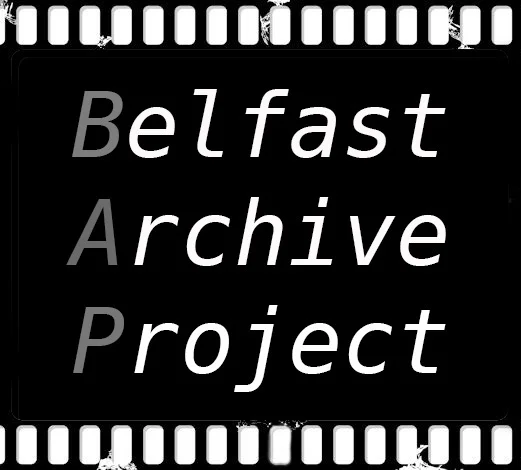Life on the faultlines
Frankie Quinn published Interface Images, his first book of ‘peaceline’ photography studies 12-years ago. It was the year of the first paramilitary ceasefires in Northern Ireland.
Four years later, the Good Friday Agreement attempted to divert conflict into political process, with patchy success and conspicuous intransigence from many.
On the surface, there has been change. Paramilitary organisations have declared ceasefires. Killings have diminished – although by no means ceased. Army watchtowers along the border have been dismantled. Walk into the centre of contemporary Belfast, and you will find a city which has apparently undergone radical progress. Strenuous investment, prestige developments and global brands set the tone for an apparently thriving, even cosmopolitan, modern city. But this is where the new money, the ‘peace dividend’ congregates. Step beyond the bright lights of regeneration, however, and Belfast’s urban geography tells a different and altogether older story.
The fall of the Berlin Wall in 1989 remains one of the iconic images of the late twentieth century. The new century, however, has been characterised, so far, by the erection of barriers, rather than their demolition. Along the Line of Control marking the disputed territory between India and Pakistan, border walls are being forced painfully into existence. In Palestine’s West Bank, Israel’s territorial ambitions are taking the physical form of a barrier which, according to a ruling by the International Court of Justice is ‘tantamount to annexation’. It is a pattern of aggressive ‘defence’ which is being echoed across continents – by Uzbekistan whose borders with Kyrgyzstan are infested with mines); by Saudi Arabia against Yemen; by Turkish occupied Cyprus against the island’s indigenous Greek inhabitants and, along their shared border, by the USA against Mexico. Few places, however, exhibit the same complex internal partitions as Northern Ireland.
No commentator can mention Northern Ireland’s ‘peacelines’ without pointing to the irony of the term. The conflict has always, after all, been fertile ground for the use of ironic euphemism - the ‘Troubles’ being a significant example. The ‘peacelines’ were born out of the vicious sectarian strife of the late sixties onwards. These began as haphazard barricades thrown up by Catholics and Protestants in defence against sectarian incursions into their areas; the British army, subsequently, added their own. The barricades were formalised as a security measure which was, supposedly (and, again, ironically), temporary. In fact, the interface barriers are the faultlines that define the tectonics of sectarian division. Almost a decade after the Good Friday Agreement the barriers are still going up, and they are being consolidated.
According to a Northern Ireland Office (NIO) peaceline stocktake there were 27 closed roads in 2001. In Belfast, some estimates place the number of NIO-built peacelines alone at over 40 (estimates differ according to definition of an individual peaceline) and they are still being erected, particularly in north Belfast – a notorious jigsaw of territorial contest. More tellingly, perhaps, Northern Ireland Housing Executive (NIHE) figures released at around the same time showed that 98 per cent of NIHE housing estates in Belfast were segregated, while across the rest of Northern Ireland the figure was 71 per cent. There are invisible as well as visible boundaries between Catholic/nationalist and Protestant/unionist areas; psychological as well as physical.
Many who live in interface areas have defended their need for interface barriers in the interest of security, but that security has come at a price. The NIO’s Policing and Public Order report for 2001 recognised that interface residents face disproportionate social and economic disadvantage. Businesses, understandably, are unwilling to locate at flashpoint areas. Demographic changes, meanwhile, mean that more Protestant housing estates tend to be underoccupied while, in many Catholic areas, housing demand outstrips supply. Issues relating to territoriality underscore ongoing tensions between the need for housing and the need for security. Unemployment is high in interface areas: 40 per cent in some. In 2001, 88 per cent of Catholic children and 71 per cent of Protestant children in segregated estates were identified as living on or below the poverty line. The economic feelgood factor of the city centre is evidently not making its way along these hardening arteries of dislocation.
For all that the barriers may provide psychological reassurance for inhabitants on both sides; their security value is not absolute. A CAJ report of 2001 found that, while the erection of new barriers and closing of peaceline gateways in north Belfast reduced instances of criminal damage, they did not deflect rioting in those areas. Interface violence is still a fact of life, as is the anxiety of defensive living. Displays of culture and tradition, including parades and associated protests, still prompt escalations in tension and hostility. Perhaps even more lethal is the apathy that regards segregation as indelible.
The images that Frankie Quinn has gathered of the peacelines since early 2002 offer a compelling portrait of continued division. The panoramic medium is ideally suited to the content - extended lengths of unique urban architecture - especially where the steel fences scythe between swathes of abandoned or demolished land and lowering skies. Blocked doors and gateways show where embattlement has closed off any point of contact. Desolate housing and vandalism are leitmotifs of a lack of emotional as well as economic investment.
These are sharp reminders of the depths of division. In one image an Orange Order parade ‘breaches’ the peaceline. In another a pallid statue of the Virgin Mary stands sentinel behind a spiked fence. The barriers are used also, by residents with paint, to question, to protest, sometimes to make the best of.
Something else is evident here too. There are places in which multi-coloured brickwork and decorative shrubbery have replaced the more overt hostility of steel spikes. This implies permanence, the planned integration of segregation into the landscape. In other images boundaries have become feral, scrubland marking an abandoned no-man’s-land, while plants colonise the fences as if they are a natural feature of our landscape.
These are not the peacelines that attract the tourists, however. It is the assertive walls, those with murals outlining ‘our’ and ‘their’ interpretations of the conflict that bring out the cameras of those attracted to Northern Ireland by our newfound accessibility and ‘peacetime prosperity’. And that, too, is ironic. Quinn’s pictures of camera-laden sightseers dipping their toes in the aftermath of conflict highlight the division between the buzzing hub of commercial regeneration and those who have been left behind.
These images show the anger, the hostility, the humour, the apathy and the resilience of people who find themselves living in fragile citadels of segregation. The NIO noted in 2001 that ‘the adverse impact [of the peacelines] is a necessary one in the national security context.’ Quinn’s peaceline photography is a vital reminder that there will be no real peace until these barriers, and the sectarian principles underpinning them, can be dismantled.
100% of every donation goes directly to programming. We deeply appreciate your support!
Social media
-
Great book launch for Michael McCann at Cultúrlann! Pick up a copy of his Burnt Out: How the Troubles Began!… https://t.co/M9GHarkXCG
-
RT @Inter_Arch: Nice to see more material on the Belfast Archive website. Includes Gerry Collins shots of Bombay St in August 1969… https://t.co/kgtGGySLiK













